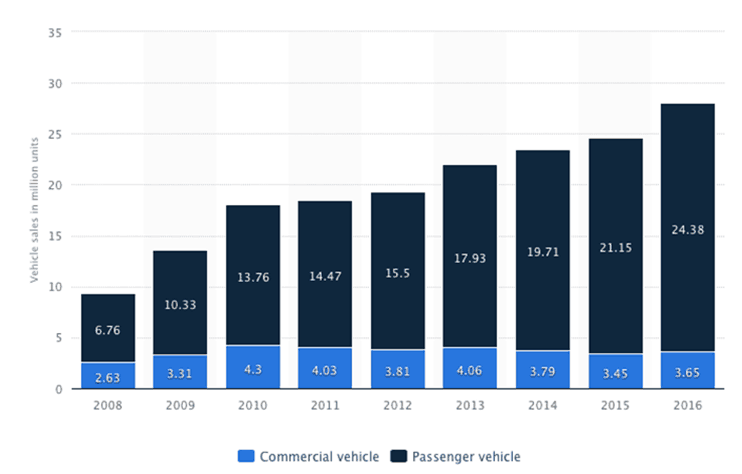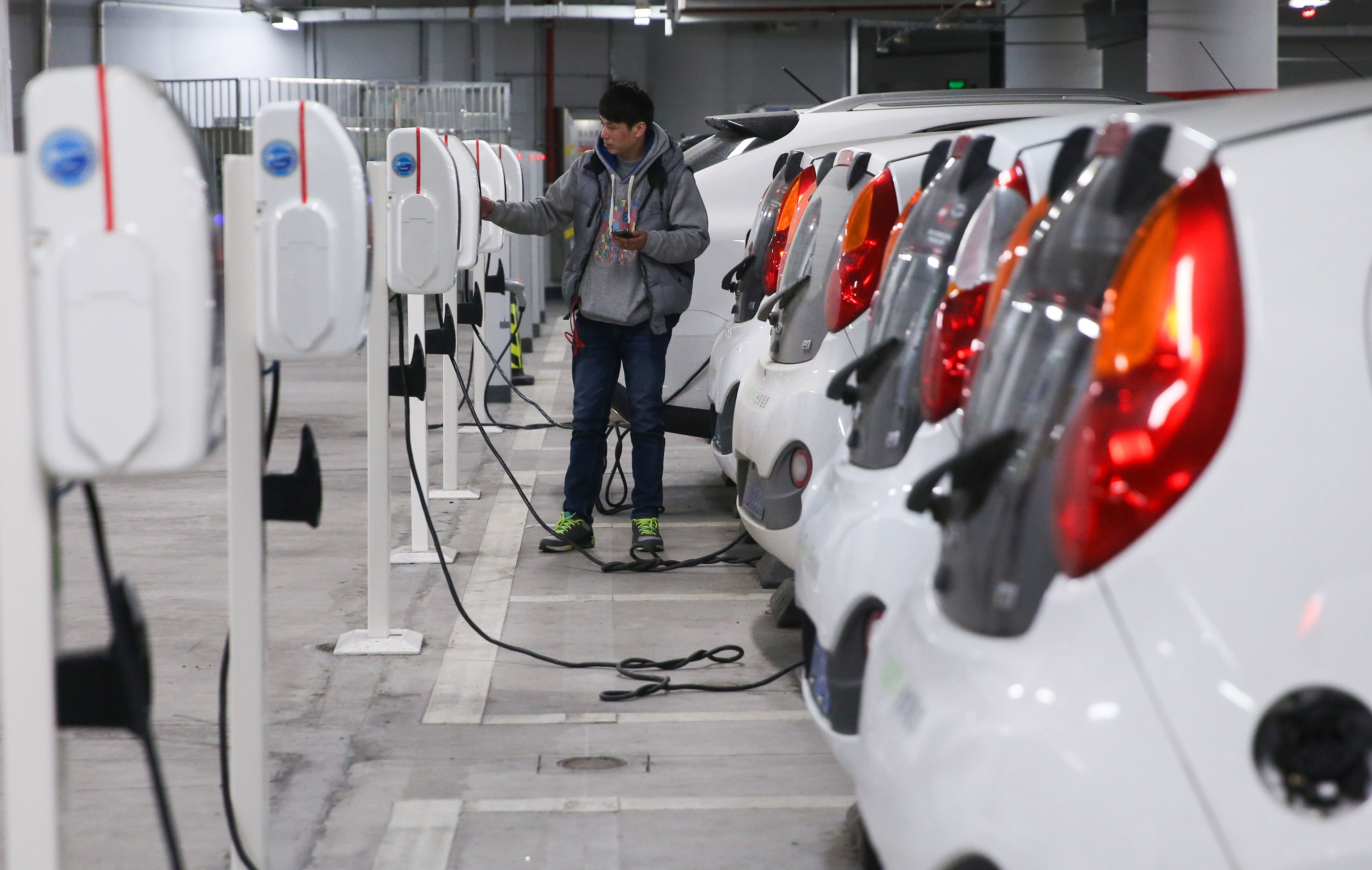Analyzing The Chinese Automotive Market: Case Studies Of BMW And Porsche

Table of Contents
The Unique Challenges and Opportunities of the Chinese Automotive Market
The Chinese automotive market presents a unique blend of challenges and opportunities for international players. Understanding these nuances is crucial for success.
Market Size and Growth
China's automotive market is staggering in its scale. Millions of vehicles are sold annually, creating a massive market for both mass-market and luxury brands.
- Market Size: China's annual vehicle sales consistently exceed those of any other country, reaching tens of millions of units annually.
- Market Segmentation: The market is highly segmented, encompassing a broad spectrum from budget-friendly vehicles to high-end luxury cars. This allows for niche marketing strategies.
- Government Policies: Government regulations, particularly concerning New Energy Vehicles (NEVs), including electric and hybrid cars, significantly impact market trends and technological advancements. Incentives and restrictions play a vital role in shaping the industry.
Consumer Preferences and Trends
Chinese car buyers are increasingly sophisticated and discerning. Their preferences are evolving rapidly, influenced by technological advancements, social media, and a rising middle class with disposable income.
- Technological Advancements: Chinese consumers show a strong preference for advanced technologies, including electric vehicles, autonomous driving features, and sophisticated infotainment systems.
- Online Car Buying: E-commerce platforms and online car buying experiences are gaining significant traction, altering traditional sales models.
- Social Media Influence: Social media plays a critical role in shaping brand perception and influencing purchasing decisions. Effective digital marketing is essential.
Competitive Landscape
The Chinese automotive market is intensely competitive, with both established international brands and rapidly growing domestic players vying for market share.
- Domestic Competition: Chinese automakers, such as Geely, BYD, and Great Wall Motors, are increasingly competitive, offering technologically advanced and affordable vehicles.
- Price Wars: Price competition is fierce, requiring manufacturers to strike a balance between profitability and competitive pricing.
- Localization: Adapting products and marketing strategies to suit local preferences and regulations is paramount for success.
BMW's Strategy in the Chinese Automotive Market – A Case Study
BMW has established a significant presence in China through a multifaceted strategy focused on localization and a strong brand image.
Localization and Production
BMW has invested heavily in local production facilities and tailored models to meet specific Chinese consumer demands.
- Model Adaptation: BMW offers models specifically designed and engineered with Chinese preferences in mind.
- Local Partnerships: Collaborations with Chinese suppliers enhance efficiency and responsiveness to local market needs.
- Factory Locations: Strategic factory locations across China ensure efficient distribution and reduce transportation costs.
Marketing and Branding
BMW's marketing emphasizes a balance between luxury and technological innovation, resonating with the aspirations of Chinese consumers.
- Targeted Campaigns: Marketing campaigns are carefully crafted to target specific demographics and address their unique preferences.
- Social Media Engagement: A robust social media presence fosters direct engagement with consumers and builds brand loyalty.
- Celebrity Endorsements: Strategic partnerships with influential celebrities enhance brand visibility and appeal.
Sales and Performance
BMW consistently ranks among the top-selling luxury brands in China, reflecting the success of its localized strategy.
- Strong Sales Figures: Consistent growth in sales figures demonstrates strong market penetration and consumer acceptance.
- Competitive Market Share: BMW maintains a significant market share compared to competitors in the luxury segment.
- Sales Trend Analysis: Analyzing sales trends provides insights into market dynamics and consumer behavior.
Porsche's Strategy in the Chinese Automotive Market – A Case Study
Porsche has successfully maintained its premium brand image and exclusivity while expanding its market share in China.
Brand Positioning and Exclusivity
Porsche meticulously maintains its image as a symbol of luxury, performance, and heritage, aligning with the aspirations of high-net-worth Chinese consumers.
- Luxury Marketing: Focus on exclusivity, heritage, and superior driving experiences drives brand desirability.
- Brand Heritage: Emphasizing Porsche's history and racing legacy adds to the brand's prestige and allure.
- Customer Experience: Exceptional customer service and exclusive events solidify Porsche's premium image.
Digital Marketing and Engagement
Porsche leverages digital channels effectively to engage with Chinese consumers, creating a personalized and immersive brand experience.
- Online Marketing Campaigns: Targeted online campaigns reach key demographics effectively on various digital platforms.
- Social Media Strategies: Strong social media presence builds brand awareness and cultivates engagement with potential buyers.
- Virtual Showrooms: Innovative digital experiences, such as virtual showrooms, allow consumers to engage with Porsche's brand virtually.
Sales and Market Performance
Porsche's sales figures in China showcase consistent growth and remarkable market performance.
- Strong Sales Growth: Consistent growth in sales demonstrates the success of the brand's strategy in China.
- Competitive Advantage: Porsche maintains a competitive edge in the luxury segment within the Chinese market.
- Growth Trend Analysis: Analysis of sales trends provides insights into future market projections and potential opportunities.
Conclusion: Key Takeaways and Call to Action
Analyzing the Chinese automotive market reveals that success requires a nuanced understanding of consumer preferences, effective localization strategies, and a robust digital marketing approach. Both BMW and Porsche demonstrate the importance of adapting to the unique challenges and opportunities presented by this dynamic market. Their success highlights the need for international automakers to invest in local production, tailor products to specific demands, and engage effectively with Chinese consumers through digital channels. The future of the Chinese automotive market will likely be defined by further technological advancements, particularly in the NEV sector, and the continued rise of domestic brands. Continue your exploration of the dynamic Chinese automotive market by researching recent industry reports and analyzing the latest sales figures from major automakers.

Featured Posts
-
 70 Million Blow Auto Carriers Port Fee Predicament In The Us
Apr 26, 2025
70 Million Blow Auto Carriers Port Fee Predicament In The Us
Apr 26, 2025 -
 Military Base Showdown Examining The Us China Power Struggle
Apr 26, 2025
Military Base Showdown Examining The Us China Power Struggle
Apr 26, 2025 -
 The Rise Of Chinese Automakers A Look At Their Global Impact
Apr 26, 2025
The Rise Of Chinese Automakers A Look At Their Global Impact
Apr 26, 2025 -
 White House Cocaine Incident Secret Service Concludes Investigation
Apr 26, 2025
White House Cocaine Incident Secret Service Concludes Investigation
Apr 26, 2025 -
 Chat Gpt Creator Open Ai Under Ftc Investigation
Apr 26, 2025
Chat Gpt Creator Open Ai Under Ftc Investigation
Apr 26, 2025
